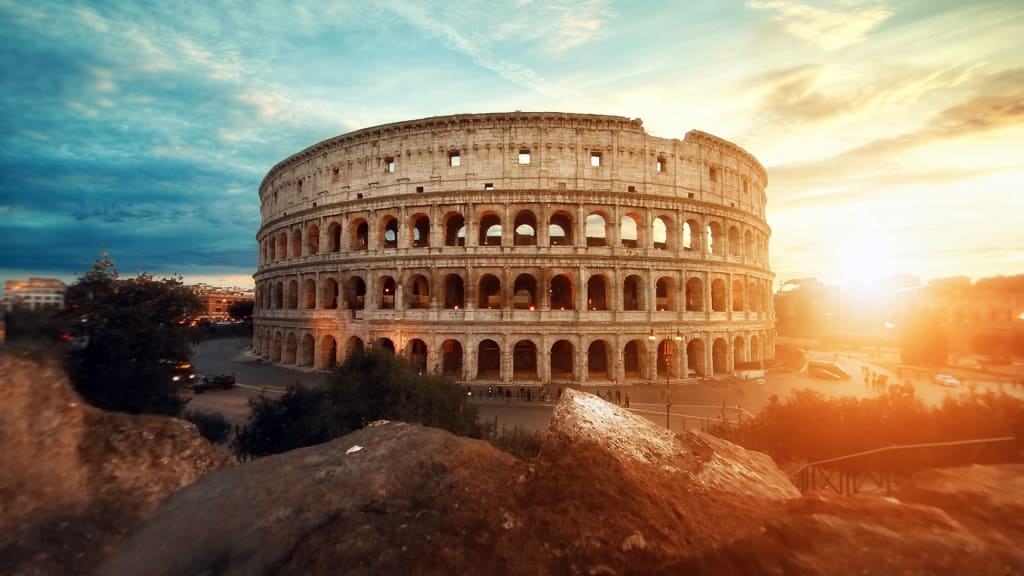Colosseum
Historical place in Rome.

The Colosseum was a grand amphitheater built in the heart of Rome by the Flavian Dynasty in the first century AD. It stood as a testament to the grandeur and power of the Roman Empire for almost 500 years, hosting various public spectacles that were popular forms of entertainment at the time.
The construction of the Colosseum began in AD 72 under the reign of Emperor Vespasian, who was determined to rebuild Rome after a period of political instability and economic decline. He envisioned the Colosseum as a grand amphitheater that would serve as a symbol of Rome's strength and resilience.
The Colosseum was built on the site of a former lake, and required massive amounts of labor and resources to construct. It was built using a combination of concrete and stone, and features four levels of arches and columns. The lower level featured Doric columns, the second level featured Ionic columns, and the third level featured Corinthian columns. The fourth level was left unadorned.
Inside the Colosseum, a complex system of tunnels and elevators was used to move gladiators, animals, and scenery in and out of the arena. The arena itself was covered in sand, which helped absorb blood and other fluids from the spectacles.
The Colosseum was able to accommodate over 50,000 spectators, making it one of the largest structures of its kind in the world. It was designed to host various public spectacles, such as gladiatorial contests and animal hunts, which were popular forms of entertainment in ancient Rome. These spectacles were often gruesome and violent, with gladiators and wild animals pitted against each other in a fight to the death.
The gladiatorial contests were the most popular and well-known form of entertainment in the Colosseum. Gladiators were typically slaves or prisoners of war who were trained in combat and forced to fight in front of a roaring crowd. The fights were often to the death, and the victors were celebrated as heroes.
The Colosseum was also used for public executions, where condemned prisoners were subjected to various forms of torture and humiliation before their eventual execution. The spectacles were intended to deter criminal behavior and reinforce the power of the Roman state.
Over the centuries, the Colosseum suffered damage from earthquakes, fires, and vandalism. However, it remained one of the most recognizable landmarks in Rome and a popular tourist destination.
In the Middle Ages, the Colosseum was repurposed as a fortress and was used as a quarry for building materials. In the Renaissance, the Colosseum was rediscovered and celebrated as a work of art and engineering. Many artists and architects were inspired by its grandeur, and it became a symbol of the classical tradition.
Today, the Colosseum stands as a testament to the enduring power and influence of ancient Rome. Visitors can tour the Colosseum and learn about its fascinating history. They can also imagine what it must have been like to witness the gladiatorial contests and other spectacles that took place there so many centuries ago.
The Colosseum remains a popular tourist destination and continues to inspire awe and admiration from visitors all over the world. It stands as a reminder of the grandeur and glory of ancient Rome, and a testament to the resilience of human engineering and creativity.





Comments
There are no comments for this story
Be the first to respond and start the conversation.